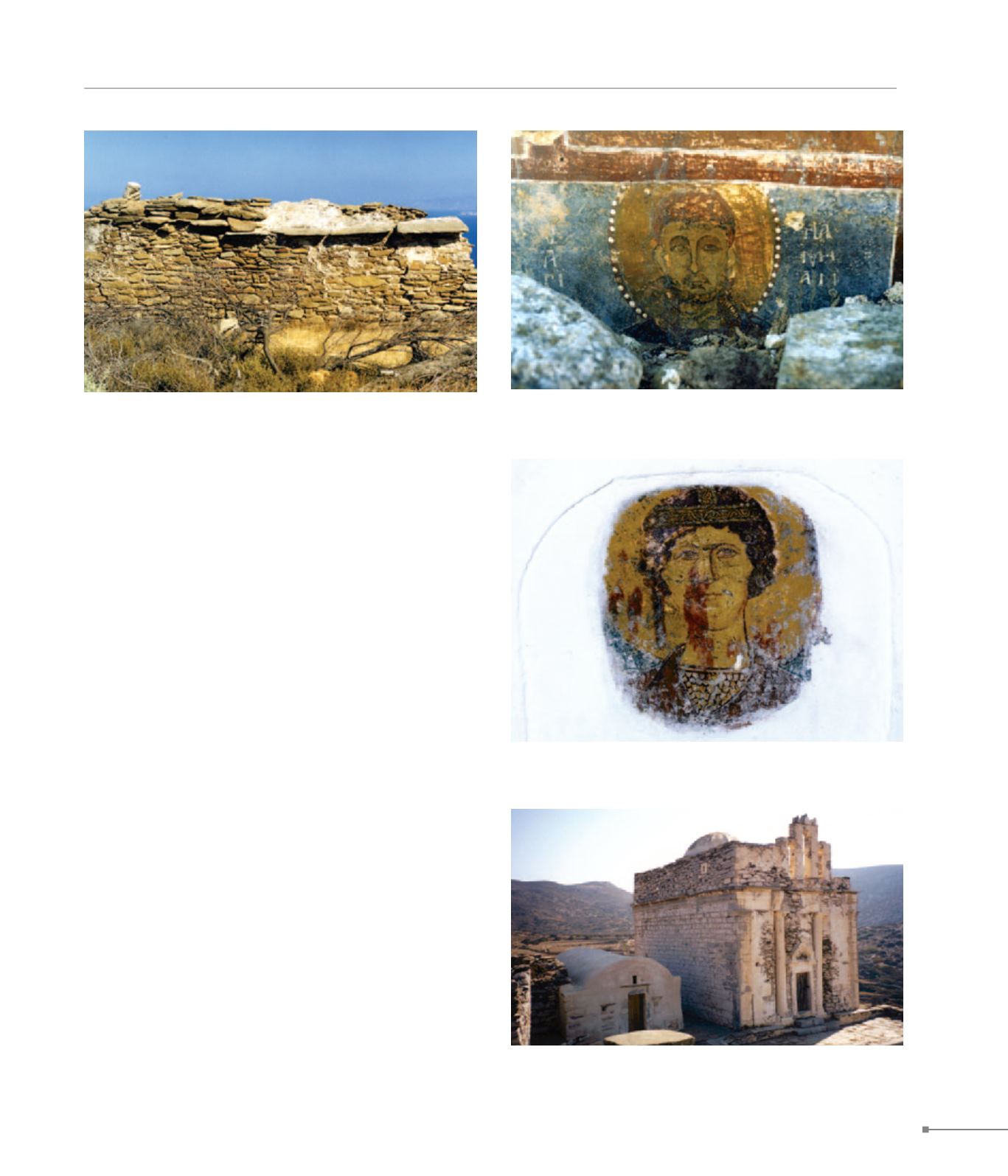
Sikinos.
Sikinos.
THE ISLANDS
381
In the mid-12th c. the Arab geographer Idrisi mentioned that
Ios prospered, was fertile and had two harbours.
Constructed in the period of Latin occupation, the now-ruined
castle (Kastro), on the top of the hill of Chora (1), dominat-
ed the large harbour. It was established by Venetian Marco I
Crispo in the late 14th-early 15th c. The barrel-vaulted church
of Saint George on the summit of the hill contains fading fres-
coes on which a carving of 1468 can be read. In the area of
Psathi Bay (4) are the ruins of a barrel-vaulted Stavros church
(Holy Cross) still bearing fragments of wall-paintings from the
13th-14th c. Frescoes from the period of Latin occupation also
survive in pieces in the single-nave, flat-roofed Stavros church
(Holy Cross) at the Bouri site (2). Finally, the ruins of another
medieval fortification have been detected in the SE of Ios, at
the Kastelli site (5).
593. Ios, Chora, church of Stavros at Bouri, wall painting (Ίος, Χώρα,
Σταυρός του Μπούρη, τοιχογραφία)
594. Sikinos, Episkopi (Σίκινος, Επισκοπή)
593. Ios, Chora, church of Stavros at Psathi, wall painting (Ίος, Ψάθη.
Σταυρός, τοιχογραφία)
593. Ios, Chora, church of Stavros at Psathi (Ίος, Ψάθη. Σταυρός)
594
. Sikinos.
The Episkopi church on Sikinos (4), a Roman mausoleum (first
half of the 3rd c.) that was converted into a Christian place of
worship, reaching its final form in the 17th c. It contains the
architectural elements of an Early Byzantine altar screen (7th
c.) incorporated in the apse, which reinforce the hypothesis
of a preceding Christian phase of the monument. From the
period of Latin occupation six churches survive on Sikinos,
a relatively large number in view of the size of the island. All
churches are small, barrel-vaulted and single-nave, with their


